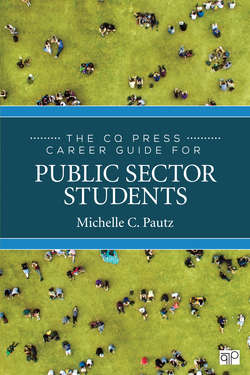Читать книгу The CQ Press Career Guide for Public Sector Students - Michelle C. Pautz - Страница 12
На сайте Литреса книга снята с продажи.
Perceptions and Myths About the Public Sector
ОглавлениеNow that you have given some thought to the various types of public sector organizations and the range of activities they engage in, you might find some of these entities potentially appealing to you professionally. But, if you’re like most people, there is a nagging voice in the back of your head saying, sure, these may be great missions, but who wants to work in the public sector. After all, if you were to stop people outside your favorite coffee or sandwich shop and ask them what their perceptions about the public sector were, you would probably get responses like “it’s full of lazy and incompetent people,” or “people who can get a real job do, and those who can’t work for the government,” or “it’s full of waste, fraud, and abuse,” or “the employees are overpaid and get cushy benefits and job security.” These myths about government, and even the non profit sector, are pervasive. Indeed, Americans have a love-hate relationship with government and the public sector. On the one hand, we expect much of the government, from mail delivery to airport safety to educating young people. But, on the other hand, we loathe government involvement in our lives, we don’t want to be inconvenienced, and we definitely don’t want to pay more in taxes than is absolutely necessary.
These conflicted attitudes are nothing new. American history reminds us how much colonists and the nation’s first citizens distrusted the British monarchy, and we know what colonists thought of taxes. While disdain for the public sector is commonplace in the United States, there have been fluctuations over time. Believe it or not, there was a time in America’s history when working in the public sector was thought of as noble and prestigious—something parents wanted for their sons (this was during the early years of the nation, and it was typically only men who worked outside of their home).
But since the latter part of the 20th century through today, we see downward trends in Americans’ attitudes about government (with the notable exception of the aftermath of the terrorist attacks of September 11). Public trust in the federal government continues to hover at near all-time lows, with only 18 percent of Americans saying they can trust government to do what is right (Pew Research Center 2017). These negative attitudes about the public sector might help explain that while 94 percent of millennials want to use their skills to be of service and benefit a social cause, only 7 percent of the federal government workforce is under the age of 30 (Curry 2017).
